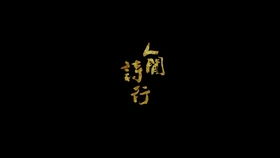Counting Change: A Comprehensive Guide to Managing Your Finances
Managing your finances can be a daunting task, especially when it comes to counting change. Whether you’re a student, a professional, or simply someone looking to get a better handle on your money, understanding how to count change effectively is crucial. In this article, we’ll delve into the various aspects of counting change, from the basics to advanced techniques, and provide you with the knowledge you need to manage your finances like a pro.
Understanding the Basics

Before diving into the nitty-gritty of counting change, it’s important to have a solid understanding of the basics. This includes knowing the different types of currency, their values, and how to identify counterfeit bills. Let’s take a closer look at these fundamental concepts.
| Currency Type | Value | Description |
|---|---|---|
| USD Dollar | $1 | The most common currency in the United States, used for everyday transactions. |
| USD Quarter | $0.25 | A coin worth a quarter of a dollar, often used in vending machines. |
| USD Dime | $0.10 | A coin worth ten cents, commonly used in transactions. |
| USD Nickel | $0.05 | A coin worth five cents, often used in small change. |
| USD Penny | $0.01 | The smallest coin in the United States, worth one cent. |
Now that you have a grasp on the different types of currency, it’s time to learn how to identify counterfeit bills. Counterfeit bills can be a significant problem, so it’s important to be able to spot them. Here are some common signs of counterfeit currency:
- Watermarks: Genuine bills have watermarks that can be seen when held up to the light.
- Security Threads: Some bills have a security thread that is visible when held up to the light.
- Color Shifting Ink: Genuine bills have color shifting ink that changes color when tilted.
- Microprinting: Some bills have microprinting, which is very small text that can be seen under a magnifying glass.
Counting Change Techniques

Now that you have a solid understanding of the basics, it’s time to learn some techniques for counting change. These techniques can help you save time and reduce errors when managing your finances.
Manual Counting

Manual counting is the most common method for counting change. Here’s how to do it:
- Start by sorting the bills and coins into their respective denominations.
- Count each denomination separately, starting with the largest denomination.
- Record the total for each denomination.
- Sum the totals for each denomination to get the grand total.
Using Counting Machines
Counting machines can be a valuable tool for managing large amounts of cash. Here’s how to use a counting machine:
- Load the counting machine with the cash you want to count.
- Press the “start” button to begin counting.
- The machine will display the total amount of cash counted.
- Verify the total by manually counting the cash.
Best Practices for Counting Change
When counting change, it’s important to follow some best practices to ensure accuracy and efficiency:
- Always double-check your counts to avoid errors.
- Keep your workspace organized to make counting easier.
- Use a calculator or counting machine for large amounts of cash.
- Stay focused and avoid distractions while counting.
Counting Change in Different Scenarios
Counting change is not just a skill for personal finance management; it’s also essential in various
